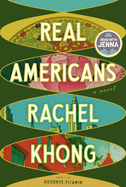
| Publisher: | Knopf | |
| Genre: | Cultural Heritage, Family Life, General, Fiction, Asian American & Pacific Islander | |
| ISBN: | 9780593537251 | |
| Pub Date: | April 2024 | |
| Price: | $29 |
| Starred | Fiction |
by Rachel Khong
Three generations of a Chinese-American family grapple with identity, expectations, and whether family equals destiny in Real Americans, the imaginative and expansive, yet intimate, second novel from Rachel Khong (Goodbye, Vitamins).
On the eve of Y2K, Lily Chen meets Matthew at her employer's office party. Their connection is undeniable, and they fall in love, but Lily's mother, a dedicated geneticist, acts strangely resistant to the idea of Matthew. When a surprising truth comes out, everything Lily thought she knew about her parents and her relationship is rocked.
Sixteen years later, Lily and her teenage son, Nick, live on a remote island in Washington State. Nick doesn't know the identity of his father, nor why Nick presents as white when his mother is Chinese-American. Nick invests in a DNA test, and he's shocked when it leads him to his father, who invalidates the story of abandonment Lily has told Nick. At the root of everything lies the story of Lily's mother, Mei, her desperate escape from 1960s China, and the scientific discoveries that would impact the Chen family for generations.
This family saga shines as both ambitious and wholly unpretentious, with a sweeping scope that spans continents and eras, and an immediacy of emotion that maintains a sense of intimacy between the reader and its multiple protagonists. Traces of science fiction and magical realism give additional texture to the realistic storyline, all combining in an exploration of fate versus choice. Real Americans is a profound, riveting, and loving journey of betrayal and forgiveness, of words left unsaid, that will provide rich food for thought for book clubs and independent readers alike. --Jaclyn Fulwood, blogger at Infinite Reads
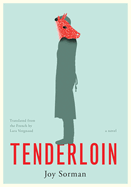
| Publisher: | Restless Books | |
| Genre: | Dark Humor, World Literature, Horror, Humorous, France - General, General, Literary, Fiction | |
| ISBN: | 9781632063618 | |
| Pub Date: | April 2024 | |
| Price: | $18 |
| Starred | Fiction |
by Joy Sorman, trans. by Lara Vergnaud
Can butchery become ballet? Is the dance of death one of romance and joy, or is it the crude swelling of muscle and a final rattle of breath before becoming mere meat? In the quixotic Tenderloin, French author Joy Sorman gives readers Upton Sinclair's The Jungle with a sprinkling of the absurdity and horror of Rachel Yoder's Nightbitch.
Pim is a skinny kid who aspires to become the best butcher in Paris. He wants money and accolades. He sees beauty in this dirty job that so few want to do, and he understands its value to the people who will pay to avoid having to do it themselves. Pim dedicates his life to the knife, to feeding people's intoxicating meat obsession, so that he can obtain a status that, eventually, he doesn't even want anymore. All Pim wants is the animal in its purest form: as a slab on his table.
Sorman's sentences swim and dive. Some are strikingly simple, while others go on for half a page but never lose readers. Sorman and her translator, Lara Vergnaud, are word magicians, and they've created a cacophonic dreamscape of power, sex, and intensity that stands on the shoulders of George Orwell's Animal Farm but is entirely its own oddity. Tenderloin peels back the layers of reverence for what we kill and what we consume. It also investigates the capitalist separation between the eater and the eaten, and the impact of that disconnect on humanity. Tenderloin is a dark, iron-drenched infestation of blood and sinew that triangulates and strangles. --Dominic Charles Howarth, book manager, Book + Bottle
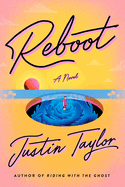
| Publisher: | Pantheon | |
| Genre: | Family Life, Satire, Literary, Marriage & Divorce, Fiction | |
| ISBN: | 9780553387629 | |
| Pub Date: | April 2024 | |
| Price: | $28 |
| Fiction |
by Justin Taylor
As Thomas Wolfe wrote, one can't go home again, but that hasn't stopped television producers who hope to revive old programs from trying. Even characters in novels are getting into the act, as readers of Reboot, Justin Taylor's exuberant satire, will discover. One such character is David Crader, a star on Rev Beach, a mid-2000s "Dawson's Creek meets Buffy the Vampire Slayer" show about a beach with a "supernatural underbelly." Now David is almost 40, living in Portland, Ore., and hasn't appeared on screen in nearly a decade, thanks to a drinking problem. Mostly sober now, he runs a restaurant that closed for a year during the Covid-19 pandemic, and he stays financially afloat thanks to his role as the voice of Shibboleth Gold, the protagonist of a hugely successful "roguelike video game" with "beaucoup awards and downloads."
Rev Beach became popular again during lockdown, so when David attends a fan convention in Los Angeles, Grace Travis, his former co-star and wealthy first ex-wife, recruits him to round up the old cast for a reboot. That cast included Shayne Glade, who played the show's half-vampire dreamboat, and Corey Burch, the "Designated Fat Kid" who has since become a "Q-pilled anti-vax activist." Taylor (Flings) packs a lot into this novel, including a subplot about David's second ex-wife and six-year-old son. The result is like an overflowing tureen: the stew is tasty, but less might have been neater. Despite its excesses, the novel is great fun, with witty gibes at pop culture, conspiracy theorists, and the cult of celebrity. Remakes have their pleasures, but clever, original novels are worth tuning in for. --Michael Magras, freelance book reviewer
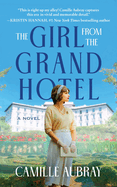
| Publisher: | Blackstone | |
| Genre: | Women, War & Military, World Literature, Sagas, Espionage, France - 20th Century, 20th Century - World War II & Holocaust, Literary, Suspense, Thrillers, Fiction, Historical | |
| ISBN: | 9798212417235 | |
| Pub Date: | April 2024 | |
| Price: | $26.99 |
| Fiction |
by Camille Aubray
Set on the French Riviera, Camille Aubray's The Girl from the Grand Hotel begins as a beach read--and what a beach!--then evolves into a glossy-fearsome thriller partly based on true events.
It's 1939, and 20-year-old New Yorker Annabel has just lost her parents. Without benefactors, she's forced to drop out of Vassar, so she takes an administrative job at a Côte d'Azur hotel managed by her French uncle. Her employment coincides with the August arrival of famous faces: Hollywood is in town for the planned first-ever Cannes Film Festival. The film community is well aware of Adolf Hitler's advances elsewhere in Europe--as Annabel puts it, the festival was pointedly conceived as "a gathering for peace, freedom, and goodwill." But things turn dark after she finds the dead body of a guest: a German tennis star who refused to join the Nazi Party.
The Girl from the Grand Hotel skips the big reveal of a traditional thriller, presumably so Aubray (Cooking for Picasso) can hew to actual events; her supporting cast is a who's who of Hollywood greats who were real-life participants in the pre-festival activities. Readers who like the pageantry of galas and the upstairs-downstairs tensions of Downton Abbey should swoon at this breathtakingly imagined novel. As for its somber turn, novelist-screenwriter F. Scott Fitzgerald, for whom Annabel is playing amanuensis, saw it coming: "Our French Riviera is lousy with spies this summer. Real spies, Annabel, not just our Hollywood spies--who are amateurs compared to these guys." --Nell Beram, author and freelance writer

| Publisher: | Random House | |
| Genre: | Women, General, Literary, Fiction, Historical | |
| ISBN: | 9780593596159 | |
| Pub Date: | April 2024 | |
| Price: | $30 |
| Fiction |
by Lisa Grunwald
Lisa Grunwald's smart, empathetic seventh novel, The Evolution of Annabel Craig, examines issues of faith, intellectual freedom, and self-discovery against the backdrop of Tennessee v. John Thomas Scopes, better known as the Scopes Monkey Trial, of 1925.
One afternoon in the small, quiet town of Dayton, Tenn., Annabel Craig overhears a group of town leaders plotting to make local teacher John Scopes the test case for a new law, the Butler Act, which forbids the teaching of evolution in Tennessee public schools. Annabel's sharp-eyed lawyer husband, George, joins Scopes's defense team, and Annabel watches (and takes photographs) as journalists, scientists, and lookie-loos descend on Dayton and the town itself is caught up in the tumult. Annabel confronts her assumptions about the relationship between science and faith, and about a woman's ability to make her own choices.
Grunwald (Time After Time) captures the rabid excitement of the trial while painting a nuanced portrait of Annabel: orphaned as a teenager, deeply in love with George, and worried about her marriage after some recent difficulties. Raised to obey male leaders on matters of faith, politics, and gender roles, Annabel begins to question those beliefs, especially when she hosts a young journalist named Lottie who challenges her on multiple points. As the trial drags on, Annabel has a front-row seat to courtroom debates, behind-the-scenes machinations, manipulation by (and of) local religious leaders, and new ideas about the choices available to women.
Thoughtful, well researched, and astonishingly contemporary, The Evolution of Annabel Craig is a compelling account of a landmark case in American law and a young woman forging her own path forward. --Katie Noah Gibson, blogger at Cakes, Tea and Dreams

| Publisher: | Restless Books | |
| Genre: | World Literature, Dystopian, Middle East - Arabian Peninsula, Satire, Literary, Fiction | |
| ISBN: | 9781632063342 | |
| Pub Date: | April 2024 | |
| Price: | $18 |
| Fiction |
by Bothayna Al-Essa, trans. by Ranya Abdelrahman, Sawad Hussain
The brutally funny and scorchingly beautiful prose of Bothayna Al-Essa's The Book Censor's Library conveys the cost of authoritarianism and book-banning in the most personal terms. Readers of satire and dystopic fiction will find a welcome companion in Al-Essa's third novel to be translated into English.
The new censor starts his career offended by the banality of romance novels and the inflated claims of self-help books. His superiors quickly redirect his efforts at assessment toward more important offenses within their totalitarian theocracy known as "the System": those against "the forbidden trinity of God, government, and sex."
During his training, the censor "had learned that language should be an impenetrable surface. It should be smooth and flat with no bottom where meaning could settle. It was a censor's job to curb imagination." But imagination lies in wait for the censor, both within the books he's asked to evaluate and within his daughter, a sensitive child who echoes fairy tales and children's stories from the prerevolutionary "Old World." The censor soon finds himself drawn to and then consumed by banned books, including Zorba the Greek, Alice in Wonderland, Pinocchio, Brave New World. He collects them into a library, and their contents even inhabit his dreams.
Aided by a group of resistance readers known as "Cancers," the censor embarks on a dangerous quest to rescue thousands more banned books from the impending flames of "Purification Day," but the mission may have dire consequences for the censor and the people he cares for.
In The Book Censor's Library, award-winning Kuwaiti writer Al-Essa (All that I Want to Forget) imparts themes that unfortunately remain timely. --Elizabeth DeNoma, executive editor, DeNoma Literary Services, Seattle, Wash.
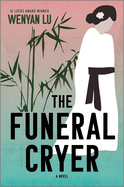
| Publisher: | Hanover Square Press | |
| Genre: | Women, Cultural Heritage, Literary, Fiction, Asian American & Pacific Islander | |
| ISBN: | 9781335016935 | |
| Pub Date: | April 2024 | |
| Price: | $28.99 |
| Fiction |
by Wenyan Lu
British Chinese author Wenyan Lu writes sublimely of quotidian, quiet lives in her debut novel, The Funeral Cryer. Lu, born in Shanghai, identifies towns and cities of her birth country as settings for her fiction but relies on titles and descriptions rather than given names for her characters. That anonymity deftly underscores the universality of human experiences--trust, betrayal, disappointment, hope, and, for the lucky, maybe love.
Lu's protagonist is the eponymous funeral cryer, hired usually by strangers to grieve the passing of a family member. Hers is the only (sporadic) income supporting her and her indolent husband. Despite his unemployment--he claims mah-jongg winnings as his household contribution--he shows no gratitude to his working wife, repeatedly demeaning her with insults. As for the cryer, being "associated with death constantly" has made her the village pariah.
As Lu establishes the couple's routines, she also nimbly integrates small disturbances that grow. Their unmarried daughter, living in Shanghai, becomes pregnant. Her father dies; her mother unexpectedly moves in. The cryer continues to cry: "Miserable stories made me feel as if my life wasn't all that terrible; all the stories added a little excitement and life to my boring existence."
Lu is an astutely attentive writer, providing small details that cleverly imply broader meanings: the cryer wears her faraway daughter's left-behind clothing that doesn't quite fit; she can chat for a few minutes outside but can never go into a neighbor's home. Lest her protagonist seem more victim than active, Lu bestows the cryer with first-person agency to craft what proves to be a richly layered story. --Terry Hong

| Publisher: | Mariner | |
| Genre: | Mystery & Detective, Fiction, Women Sleuths | |
| ISBN: | 9780063374720 | |
| Pub Date: | April 2024 | |
| Price: | $27.99 |
| Mystery & Thriller |
by Elly Griffiths
Detective Inspector Kaur, who fans of Elly Griffiths will know from her Harbinder Kaur mystery series, may drop in and out of The Last Word, but the book is fueled by a trio of Shoreham-by-Sea amateur detectives. Readers who fondly remember these three characters from The Postscript Murders may find their affection becoming ardor while consuming this equally character-driven successor.
Ukraine-born care worker Natalka Kolisnyk and opera-loving octogenarian Edwin Fitzgerald have formed a detective agency following their friend's death, which was explored in The Postscript Murders. Finally they have, as Natalka puts it, "a proper case, not just stupid divorce stuff": Minnie Barnes believes that her mother, romance writer Melody Chambers, has been murdered. The death has been attributed to a heart attack, but Minnie is convinced that Melody's second husband--a pharmacist--replaced Melody's blood pressure medicine with poison in order to inherit her estate. As evidence, Minnie shows Natalka one of her mother's notebooks, in which Melody wrote, "I think my husband is going to kill me." Or are these words intended for a novel, as Melody's husband told the police?
Griffiths's irresistible premise leads Edwin and Benedict--Natalka's ex-Benedictine monk boyfriend--to go undercover at a writing retreat that Melody attended. The retreat produces not just a corpse but also some possibly incriminating writing exercises from the visiting authors. The novel's resolution is a little shaggy, but the friendships among its three outsider sleuths make The Last Word a transporting cozy mystery, albeit one with teeth. --Nell Beram, author and freelance writer

| Publisher: | St. Martin's Griffin | |
| Genre: | Romantic Comedy, Romance, Fiction | |
| ISBN: | 9781250847089 | |
| Pub Date: | April 2024 | |
| Price: | $18 |
| Starred | Romance |
by Mazey Eddings
Two women fall in love on a North Carolina flower farm despite the con that brought them together in Mazey Eddings's steamy sapphic romance, Late Bloomer. Struggling artist Opal is surprised when her terrible friend gives her a belated birthday gift: a scratch-off lottery ticket. She's absolutely shocked when she wins $500,000.
Impulsive Opal jumps at the chance to start over and finally pursue her art as a career when she sees a flower farm for sale on Facebook Marketplace. After only a short conversation with the seller, Opal exchanges a check for the deed, but it will come as no surprise to readers that the sweet, generous woman who sold Opal this dream wasn't exactly straightforward.
Grieving farmer Pepper has been searching for her beloved Grandma Lou's will for months, but in the will's absence, Pepper's grifter mother inherited the Thistle and Bloom farm, and it apparently now belongs to Opal.
Eddings (A Brush with Love) skillfully takes a far-fetched premise and turns it into a funny, heartfelt romance. Sunshiney Opal and grumpy Pepper find common ground in their worries about failing as adults and their experiences of manipulation by those closest to them. Opal's sisters and Pepper's spirited queer friend group provide comic relief and the support both women need as they work to find a way out of the farm's dire financial straits.
Late Bloomer enchants with humor and heat, nuanced representations of neurodiversity--Opal self-identifies as neurodivergent and Pepper is autistic--and an especially swoony grump with a heart of gold. --Suzanne Krohn, librarian and freelance reviewer

| Publisher: | Berkley | |
| Genre: | Women, Romantic Comedy, Romance, Fiction | |
| ISBN: | 9780593547908 | |
| Pub Date: | April 2024 | |
| Price: | $18 |
| Romance |
by Rochelle Bilow
Second-chance romance, culinary culture, and a beautiful seaside setting sweetly combine in Effie Olsen's Summer Special, a deliciously appetizing rom-com by food writer Rochelle Bilow (Ruby Spencer's Whisky Year).
Effie Olsen is single and 33 years old when she gets "fired from her dream job" as a chef in San Francisco. Broke and without a backup plan, she packs "the contents of her entire life" into a suitcase and returns to her "absurdly small, insufferably chatty" hometown of Alder Isle, Maine, for the first time in 16 years. Effie takes refuge with her father and younger sister, a "Generation Z financial prodigy," under the pretext of a summer visit.
Effie's return also reunites her with Ernie Callahan, her former best friend from high school. Ernie works as a butcher and prep cook at Brown Butter, a farm-to-table restaurant operated by a sexist male head chef who offers Effie a job. Working under the same roof, Effie and Ernie easily rekindle their friendship and create a "bucket list" of activities: watching sunsets, indulging in enormous lobster rolls, and even trying salsa dancing. But as she forms new memories with Ernie, a situation arises at the restaurant that calls professional integrity into question--and might prevent their friendship from becoming something more.
Bilow has worked as a line cook and at Bon Appétit magazine. Her insider knowledge is a key ingredient in this romance, adding depth and authenticity to this spicy and satisfying story that blends the pleasures of true love with elements of self-discovery. --Kathleen Gerard, blogger at Reading Between the Lines
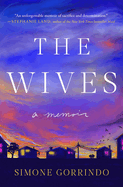
| Publisher: | Scout Press/Gallery | |
| Genre: | Biography & Autobiography, Women, Memoirs, Military | |
| ISBN: | 9781982178499 | |
| Pub Date: | April 2024 | |
| Price: | $29.99 |
| Starred | Biography & Memoir |
by Simone Gorrindo
An unflinching, powerful memoir by Simone Gorrindo, whose essays have appeared in the New York Times and New York magazine, The Wives is both an intimate, vulnerable portrait of a marriage and an important depiction of the sacrifice and bravery of military spouses.
In 2012, at the age of 28, a newly married Gorrindo left behind her dream job as an editor in New York to become an army wife in Georgia, giving up "career, friends, more than a decade of history." Her husband, Andrew, had never been able to shake off his desire to join the military. After couples therapy and many hard conversations, they headed off to enter a life that would prove to be alien and challenging, particularly for Gorrindo, who did not have army training to lose herself in.
Gorrindo's writing is evocative and immersive as she captures the many complexities of military life, such as the constant fear of receiving bad news and the debilitating loneliness caused by her husband's frequent deployments and the hierarchies of her new social circles. Gorrindo found herself in a community that was very different, culturally and politically, from anything she was used to. "I hadn't found a place here," she reflects, "or had not yet figured out how to fit into the place I had made."
With fearlessness and brutal honesty, Gorrindo invites readers into an exclusive, hidden world. She brings to life the strong, complicated women who became her found family and celebrates the loyal bonds of the sisterhood that ultimately rescued her from some of her darkest moments. --Grace Rajendran, freelance reviewer
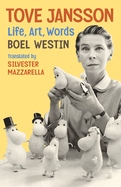
| Publisher: | University of Minnesota Press | |
| Genre: | Biography & Autobiography, Women, Literary Figures, Artists, Architects, Photographers | |
| ISBN: | 9781517917296 | |
| Pub Date: | April 2024 | |
| Price: | $29.95 |
| Biography & Memoir |
by Boel Westin, trans. by Silvester Mazzarella
The subject of Boel Westin's Tove Jansson: Life, Art, Words is a towering figure in 20th-century children's literature, best known for her enormously popular children's series featuring the hippoesque creatures known as Moomins and the other characters who populate their home in Moominvalley.
Westin's detailed biography, translated from the Swedish by Silvester Mazzarella, provides an intimate portrait of Jansson's life, and traces the development of her talent for drawing, illustration, and painting, encouraged by her unconventional artistic family in the decades prior to World War II. The book exactingly depicts her journey, including her technical detail and her thoughts on art, her evolving confidence as an artist, and the development of her singular style in various media as she studied in her native Finland, Stockholm, and Paris--and as she traveled across Italy, even as the storm clouds of World War II gathered.
Westin shares the origin story behind the Moomins, a reaction to the trauma of war: "The story of the family in the valley was a realisation of the idea 'of a happy society and a peaceful world,' a fiction sprung from the dreams of the war years and a longing for something else." But the standout elements of this impressive biography come in the form of Jansson's own sketches, paintings, journals, notes, and letters, as well as photos showing her at work. Seeing Jansson's process throughout the pages, readers gain an enhanced understanding of and appreciation for this exceptional artist who continues to inspire and delight the world to this day. --Elizabeth DeNoma, executive editor, DeNoma Literary Services, Seattle, Wash.
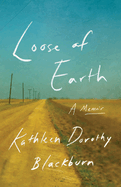
| Publisher: | University of Texas Press | |
| Genre: | Biography & Autobiography, Nature, Environmental Conservation & Protection, General, Memoirs | |
| ISBN: | 9781477329627 | |
| Pub Date: | April 2024 | |
| Price: | $26.95 |
| Biography & Memoir |
by Kathleen Dorothy Blackburn
Kathleen Dorothy Blackburn's incisive debut memoir, Loose of Earth, explores the fallout from Blackburn's father's colon cancer diagnosis in 1990s Lubbock, Tex., and depicts Blackburn's evangelical mother's increasingly desperate attempts to save her husband's life by acts of faith.
The oldest of five children, Blackburn was a young teenager already starting to question her parents' rigid views when her father was diagnosed. She watched as her parents sought out increasingly outlandish faith healers who made dramatic claims, and as her mother's strictures on diet and behavior grew more exacting, and she wondered if faith (or the lack of it) had any bearing on her father's health. As an adult, Blackburn extensively researched the link between cancer diagnoses and the presence of harmful chemicals developed for use in household and industrial products such as nonstick cookware and firefighting foams. The memoir juxtaposes this research against vivid scenes from Blackburn's childhood and her present-day attempts to understand her parents' actions.
Like its windswept west Texas setting, Blackburn's narrative contains both harsh realities and seductively powerful illusions. She details the tightknit community and the impossible promises of the church her family belonged to; her struggles to care for her siblings and her resentment toward her parents for keeping them so isolated; and her grief at the death of her dad and the rock-solid certainty of her belief. Quiet but unsparing in its gaze, Loose of Earth is an unusual faith-deconstruction memoir that deals with the fault lines in a family and the unseen but real environmental hazards that threaten the health of human beings and the earth they walk. --Katie Noah Gibson, blogger at Cakes, Tea and Dreams

| Publisher: | Doubleday | |
| Genre: | Biography & Autobiography, Europe, Adventurers & Explorers, History, Maritime History & Piracy, Great Britain - Georgian Era (1714-1837) | |
| ISBN: | 9780385544764 | |
| Pub Date: | April 2024 | |
| Price: | $35 |
| History |
by Hampton Sides
The epic final voyage of Captain James Cook was historic but also catastrophic, as historian Hampton Sides (In the Kingdom of Ice) masterfully recounts in The Wide Wide Sea. On July 12, 1776, Cook left England aboard the HMS Resolution, which was soon joined by the HMS Discovery, on a projected two-year exploratory expedition to the Pacific. Cook's "secret instructions" from the British Admiralty were large in scope: reach the Pacific Ocean via the Cape of Good Hope and return Mai, a beloved Tahitian crewmember, back to his home; sail to the Pacific coast of North America and claim any new lands for England; and seek the fabled Northwest Passage.
Sides is a superb storyteller with an eye for the physical beauty within "the blue void" of the Pacific, and he paints lush portraits of the islands Cook visited and their diverse cultures. Sides also examines Cook's unusual behavior, which included "uncharacteristic surliness" and "flights of temper," and suggests that Cook's "saturnine moods" may have been the result of acute sciatica. Whatever the cause, Sides reveals a man who, by this voyage, had become "a despot... with a mean streak" who "was slowly losing faith in the supposed benefits of cross-cultural contact." Sides's minute-by-minute account of Cook's last moments on the Big Island of Hawaii in 1779--the outcome of his intemperate decision making, Sides argues--is simply riveting. Populated with a panoply of colorful personalities and places, The Wide Wide Sea thrills as it also plumbs the problematic depths of "discovery." --Peggy Kurkowski, book reviewer and copywriter in Denver

| Publisher: | Little, Brown | |
| Genre: | Corruption & Misconduct, Business & Economics, General, Government & Business, Corporate & Business History, Political Science | |
| ISBN: | 9780316269773 | |
| Pub Date: | April 2024 | |
| Price: | $32.50 |
| Business & Economics |
by Dana Mattioli
A riveting corporate exposé, The Everything War: Amazon's Ruthless Quest to Own the World and Remake Corporate Power investigates in impressive depth the "feudal overlord" arrangements that sustain Amazon's position at the top of the economic food chain and enable it to overwhelm its competition using methods that sometimes verge on unethical.
Debut author Dana Mattioli is an award-winning journalist who has served as the Wall Street Journal's Amazon reporter since 2019. She conducted extensive conversations with more than 600 people, including current and former Amazon employees, board members, and members of its most senior team of executives, which Amazon calls its S-Team. Mattioli also interviewed "the company's competitors, including CEOs, sellers, [and] small business owners." Her alarming narrative captures how the organization serves as an "800-pound deterrent to would-be competitors," its success story littered with "cautionary tales" of former rivals who were obliterated by its tenacious reach.
Take the case of Ubi, a voice-activated device created by Leor Grebler in 2012. Ubi became the first of many startups to claim Amazon misused their proprietary information to directly compete with them. Before their talks petered out, Grebler shared troves of Ubi's proprietary data, "almost a road map for the product," with Amazon representatives in 2012 and 2013. Amazon released its voice-activated Echo device in 2015.
Mattioli had access to a multitude of "internal documents, emails... business plans, and strategy memos" that support her capacious reporting. Her spirited book takes readers inside the inner sanctum of a corporate giant that will "stop at nothing" to win. --Shahina Piyarali
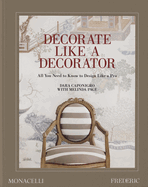
| Publisher: | Monacelli Press | |
| Genre: | Decoration & Ornament, Architecture, General, Interior Design | |
| ISBN: | 9781580936309 | |
| Pub Date: | April 2024 | |
| Price: | $65 |
| House & Home |
by Dara Caponigro, Melinda Page
Decorate Like a Decorator: All You Need to Know to Design like a Pro delivers on the promise of its title as it offers an impressive collection of photographs of interior spaces. Author Dara Caponigro, the editor-in-chief of Frederic magazine, has created a visual feast. Anyone looking to elevate their design acumen and shape their own incomparable custom spaces will find inspiration from these beautifully captured interiors, which display the talents of some of the world's leading professional decorators.
Caponigro draws on the expert work of Frederic's editorial team to assemble this breathtaking compendium. The result isn't so much a how-to or step-by-step instructional guide as a mind-opening wellspring of creativity and expression that will show readers what's possible.
Whether its photos are capturing slipcovers or folding screens, wall paint or picture rails, Decorate Like a Decorator leaves no element of a room overlooked. Caponigro even considers ceilings, a feature that likely goes unnoticed by most readers, declaring them an "oft-forgotten 'fifth wall' " and "an exciting opportunity to take a space to new heights." Readers whose homes are less lavish than some of the opulent mansions featured here will still find the book's principles translatable to their own abodes.
Decorate Like a Decorator belongs in any ambitious home decorator's library. Design afficionados will return to its wealth of ideas and informed insight again and again as they develop spaces that are both stylish and functional. --Elizabeth DeNoma, executive editor, DeNoma Literary Services, Seattle, Wash.
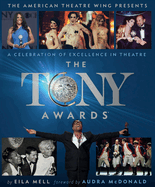
| Publisher: | Black Dog & Leventhal | |
| Genre: | Theater, History & Criticism, Musicals, Music, Genres & Styles, Broadway & Musicals, Performing Arts, Stagecraft & Scenography | |
| ISBN: | 9780762484416 | |
| Pub Date: | April 2024 | |
| Price: | $55 |
| Performing Arts |
by Eila Mell
Once a year, in June, theater lovers can watch the Tony Awards on television. The other 364 days of the year, they can read and revel in Eila Mell's glorious glitter bomb of a salute to Broadway, The Tony Awards: A Celebration of Excellence in Theatre.
This stately book commemorates three-quarters of a century of high-watermark theater as recognized by the American Theatre Wing, which originated and co-sponsors the Tony Awards (and which gave this book its imprimatur). Beginning with 1947's inaugural Tonys and proceeding through 2023, Mell (Designing Broadway, coauthored with Derek McLane) lists each year's winners in all categories, followed by award-holder commentary from names familiar and otherwise. Winners relive their big night, recall what went into earning an award, and explain what it represents. As actor Alan Cumming puts it, "When you win a Tony that becomes your prefix forever."
The Tony Awards amounts to an oral history featuring lavish layouts that include the odd promotional still or set design, but the illustrations are overwhelmingly photos of presenters and winners in their awards ceremony finery. (Readers should prepare to feel underdressed.) Sections at the end of each decade devoted to acceptance speech highlights will be like manna to theater geeks. Among the unforgettable remarks are winning actress of 1983 Natalia Makarova's muted tribute to her husband, "who didn't help much but wasn't in my way," and winning choreographer of 1973 Bob Fosse's rimshot-worthy line: "Let me just say thank you to all the marvelous people who helped with the show and say that they could not have done it without me." --Nell Beram, author and freelance writer
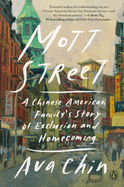
| Publisher: | Penguin Books | |
| Genre: | Biography & Autobiography, Public Policy, United States, Immigration, General, History, Memoirs, Political Science | |
| ISBN: | 9780525557395 | |
| Pub Date: | April 2024 | |
| Price: | $18 |
| Now in Paperback |
by Ava Chin
Writer-professor Ava Chin skillfully mixed food and (maternal) family in her award-winning 2014 book, Eating Wildly. Her exceptional sophomore memoir, Mott Street, reads like a companion text, inspired by an adult reconnection with her estranged father, who abandoned his wife long before his daughter formed any memories of him. Mott Street is an expansive personal history that originates in China's Pearl River Delta in the 1860s and eventually leads to a six-story building at 37 Mott Street--considered "the height of luxury" when it was built in 1915--in New York City's Chinatown, where both of Chin's parents were born. For more than a century, the Chins and Ng-Doshims called the red-brick tenement home; Chin's writing studio is now on the fourth floor, making her a fourth-generation resident.
In 1882, the Chinese Exclusion Act became the first U.S. immigration law specifically targeting race. Its repercussions hit Chin's ancestors--and thousands of others--truncating families, creating so-called paper sons, and transforming immigrant narratives into "complete and utter fiction," which Chin spent decades unraveling across oceans and continents. From historical erasure to her own separation from her paternal family, Chin discovers that "when you're Chinese in America, with roots that stretch back to the Exclusion era, it is the historical record that is a fabulist fabrication, and the oral stories, passed down from generation to generation, like rare, evolving heirlooms, that ultimately hold the keys to the truth." Enhanced with rare photographs and documents, Chin achieves on the page what wasn't possible in her own actual life: to entwine her parentage into a single enduring story of abiding resilience and indelible inspiration. --Terry Hong
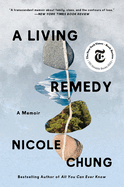
| Publisher: | Ecco | |
| Genre: | Biography & Autobiography, Women, Asian & Asian American, Memoirs | |
| ISBN: | 9780063031623 | |
| Pub Date: | April 2024 | |
| Price: | $19.99 |
| Now in Paperback |
by Nicole Chung
Nicole Chung's first memoir, All You Can Ever Know, looked closely at her experience as a Korean adoptee raised by "color-blind" white parents. With A Living Remedy, Chung again turns a thoughtful eye on her family, this time facing the loss of both parents in a devastating handful of years. Her narrative, understandably, tackles death and grief in all its myriad forms, but it also provides an incisive indictment of the U.S. healthcare system, and the ways it fails those living in economic insecurity.
After attending college across the country, Chung builds a life far from her parents in Oregon, a decision both difficult and necessary. But caring for aging parents at such a distance proves nearly impossible, especially when complications from diabetes and kidney disease strike her father, revealing just how vulnerable they are. She knows her father's death did not have to occur as it did, and writes, "It is still hard for me not to think of my father's death as a kind of negligent homicide, facilitated and sped by the state's failure to fulfill its most basic responsibilities to him and others like him." Then Chung's mother is diagnosed with terminal cancer as Covid-19 lockdowns set in. The distance becomes unbearable, and navigating this grief is its own challenge: "Loss in the time of coronavirus can feel like skirting the borders of a deep, dense forest that is still largely unknown and unexplored." Beautifully written, A Living Remedy faces loss in all its heartrending shades, but mingling in every dark moment is the light and love of family and the unquenchable faith of her parents. --Sara Beth West, freelance reviewer and librarian

| Publisher: | Riverhead | |
| Genre: | Friendship, Literary, Fiction, Gay, LGBTQ+ | |
| ISBN: | 9780593332344 | |
| Pub Date: | April 2024 | |
| Price: | $18 |
| Now in Paperback |
by Brandon Taylor
Brandon Taylor's The Late Americans offers an insightful and razor-sharp portrait of the interconnected lives of a cohort of writers, dancers, and thinkers living in the contemporary American Midwest. Seamus is a white, aspiring poet but his holier-than-thou writer's MFA workshop makes him viscerally sick. Ivan is an ex-dancer building a career in finance on the back of money raised by his pornography. And Fyodor is a mixed-race worker in a beef processing plant who can't stop pushing away his partner. Together with a whirlwind of other figures who swirl in and out of each other's lives in Iowa City, these characters share friendships and emotional fallouts, triumphs, and betrayals, forever grappling across the fault lines of race, sexuality, and class.
Like other works by Taylor (Real Life; Filthy Animals), The Late Americans demonstrates a nuanced understanding of not only individual characters but the social worlds that tie them inextricably together. Taylor's characters unfold through specific, recognizable details, like Fyodor's tenderness toward the meat he cuts, "which was rather soft and delicate, like cloth or dough. You had to respect its natural geometry"; or Seamus's particularly acute yet distant experiences of pain: "There was a faint rattle in his chest when he breathed.... His shoulder ached. He put his thumb into his mouth and bit hard on the gristle at its edge. There was a sharp prick of pain, and then only dull heat." But it's the way these people interact with each other, from new perspectives and in new contexts, like chemicals transforming in solutions, that results in a deeply evocative portrait of anxiety and vulnerability, ambition, and intimacy. --Alice Martin, freelance writer and editor

| Publisher: | Chronicle | |
| Genre: | Concepts, Animals, General, Environment, Science & Nature, Juvenile Fiction | |
| ISBN: | 9781797202778 | |
| Pub Date: | April 2024 | |
| Price: | $18.99 |
| Starred | Children's & Young Adult |
by Brendan Wenzel
Although their perspectives on rainstorms and tree climbing may differ, a dog and a cat don't let this mar their close friendship in Brendan Wenzel's rhyming picture-book charmfest Two Together, in which the unlikely twosome share a timeless and relatable goal: to get home safely.
As a dog and a cat head home together on foot, they encounter the ordinary ("Two together much to see./ Unknown sounds. Smells on trees") and the relatively dramatic: they run into a toad, cross a stream, wake a bear, escape through a swamp, and so on, until finally, "Two together see a light!/ All is dark. Home is bright." Curled up together by the fireside, the companions even dream together: an illustration shows them running from the house and into the darkness, presumably in search of more adventure.
Simple, supple rhymes are just right for this old-fashioned, uncomplicated tale of friendship, but there's nothing atavistic about the art. As he did in They All Saw a Cat and Hello Hello, Wenzel throws a kitchen sink's worth of media at the page to see what sticks, and the answer is well, practically everything (but, according to the books cataloging page, "mostly acrylic, watercolor, colored pencil, and a computer"). Scenes viewed by the dog, who has rounded edges and a painted appearance, have a likewise round-edged-and-painted appearance; art showing the cat's perspective is, like the cat, sketch-like and shaded with what looks like colored pencil. Two Together is here to say that a marvelous whole can be spun from disparate elements--whether what's under consideration is artistic technique or a cross-species friendship. --Nell Beram, freelance writer and YA author
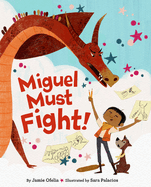
| Publisher: | Little, Brown Books for Young Readers | |
| Genre: | Hispanic & Latino, Art, Family, Boys & Men, Imagination & Play, Juvenile Fiction, Multigenerational | |
| ISBN: | 9780316365093 | |
| Pub Date: | April 2024 | |
| Price: | $18.99 |
| Starred | Children's & Young Adult |
by Jamie Ofelia, illust. by Sara Palacios
In Jamie Ofelia's well-honed, winning debut, Miguel is a gentle, artistic boy in a family of sword fighters. Between Us and Abuela illustrator Sara Palacios endearingly captures the nature of this courageous and loving family in which Miguel is "like a paintbrush, clever and colorful, in a family of steely swords."
All Miguel's life his family has told him, "You must fight!" His abuelitos spar while sipping tea, his parents duel like dancers, and his little sister, Zulema, terrifies the other toddlers with her wooden dagger. But artistic Miguel "can't waste time fighting when there's so much beauty to capture!" Even the townsfolk worry about Miguel's disinterest in fighting, until a dragon gives the boy a chance to shine. Mami, Papi, Abuela, Abuelo, and Zulema all fail to destroy El Dragón, a ferocious fire-spewing beast. When the dragon taunts the family--"Is that all you've got?"--Miguel steps forward with a sketch of the dragon. "You perfectly portrayed my sparkling eyes, my bulging muscles!" El Dragón preens. The dragon flies off clutching the paper, the town is saved, and the mayor declares a fiesta in honor of the boy, "a verdadero [true] hero!"
Ofelia seamlessly weaves Spanish words into her sharp and sweet text and there is a glossary (complete with phonetic pronunciations) at book's end. Palacios's spirited acrylic, gouache, and digital illustrations resemble traditional cel animated cartoons and her palette matches the many greens of the cacti and other plants of the Mexican landscape. Action-filled art, a positive message of creativity over warfare, and text that balances English and Spanish assure an entertaining reader experience both solo and as a read aloud. --Melinda Greenblatt, freelance book reviewer

| Publisher: | Crown Books for Young Readers | |
| Genre: | Social Themes, Young Adult Fiction, Prejudice & Racism, Asian American & Pacific Islander | |
| ISBN: | 9780593563410 | |
| Pub Date: | April 2024 | |
| Price: | $19.99 |
| Children's & Young Adult |
by Patricia Park
Patricia Park dishes out a searing indictment of model minority expectations in her deliciously sharp and meaty sophomore young adult novel, What's Eating Jackie Oh?
Fifteen-year-old Jacqueline "Jackie" Oh is sick of "drink[ing] the model minority Kool-Aid." She'd rather sling hash at Melty's, her Halmoni and Haraboji's ("H&H") Midtown deli, than study for her overachieving parents' Ivy League fast-track. Then Jackie lands in the hot seat when she is successfully cast in the competitive cooking show Burn Off! Each episode's challenges reveal layers of complexity about Jackie's loved ones and their generational trauma, and cooking under fire helps Jackie appreciate her multitudes as a New Yorker, classic chef, and member of her Korean immigrant family. Like her beloved scrappy dish budae jjigae, Jackie is "not this or that," and "that is the whole point."
This ambitious and culinarily robust three-part novel picks up steam as the competition intensifies, and Park's snappy dialogue and mixed-media format (particularly show transcripts) enhance Jackie's complicated internal processing. Though the novel ends abruptly, H&H are delightful foils, and their imperfect English and frequent use of Korean anchor Jackie's family identity. Park crafts cooking scenes with conviction and authenticity and includes several recipes in an appendix. Park revisits themes of identity politics, academic expectations, maternal conflict, and belonging from her poignant YA debut, Imposter Syndrome and Other Confessions of Alejandra Kim, and she draws from her 2022 New York Times op-ed, "I'm Done Being Your Model Minority," and the spike in anti-Asian bias for this plot. The result is a candid and empathetic, if hunger-inducing, feast for teen readers. --Kit Ballenger, youth librarian, Help Your Shelf
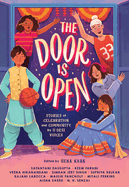
| Publisher: | Little, Brown Books for Young Readers | |
| Genre: | Friendship, Family, Short Stories, Social Themes, Juvenile Fiction, Multigenerational, Asian American & Pacific Islander, Diversity & Multicultural, Siblings | |
| ISBN: | 9780316450638 | |
| Pub Date: | April 2024 | |
| Price: | $17.99 |
| Children's & Young Adult |
by Hena Khan, editor
How much can one place mean to a community? Eleven desi authors aim to answer in The Door Is Open, a heartfelt collection of interconnected middle-grade short stories edited by Hena Khan (Amina's Voice).
Eleven desi families who live in the fictional town of Maple Grove rely on the community center as a gathering place. It's where they host cultural and religious events and ceremonies, as well as spelling bees, band practices, and chess tournaments. But the community center is at risk of being shut down. Short stories early in the book note rumors of the community center's close, such as Veera Hiranandani's "Check Yourself" about Chaya, a girl determined to win a chess tournament. The center becomes increasingly more central until the book's culmination, "The Map of Home" by Sayantani DasGupta, focuses on the families' efforts to save their meeting place.
The Door Is Open is a wonderful celebration of the commonalities and differences across desi ("people originating from the Indian subcontinent," as defined in the acknowledgments) cultures. The writers of The Door Is Open introduce readers to a variety of those cultures through food, celebration, practices, and language. At the same time, these stories bring new perspectives to the challenges facing many preteens. Issues of racism, bullying, sexuality, abuse, and insecurity are deftly handled and, if not fully resolved, at least brought to a satisfying conclusion. The Door Is Open is a sharp, insightful celebration of how heritage can both make us distinct and bridge us together. --Kyla Paterno, freelance reviewer

| Publisher: | Rocky Pond Books | |
| Genre: | Biography & Autobiography, Biography & Memoir, Social Topics, General, Depression & Mental Illness, Juvenile Nonfiction, Comics & Graphic Novels | |
| ISBN: | 9780593615621 | |
| Pub Date: | April 2024 | |
| Price: | $13.99 |
| Children's & Young Adult |
by Pan Cooke
Puzzled: A Memoir About Growing Up with OCD is a vulnerable yet encouraging graphic novel memoir in which Irish cartoonist Pan Cooke shares his experience with undiagnosed obsessive-compulsive disorder.
Puzzled starts with 10-year-old Pan describing his bedtime routine: saying the Hail Mary prayer "again and again" because he gets "this feeling like something is wrong." Pan calls this unsettledness "the Puzzle"--each new prayer attempt "is a piece to it. But the more I add... the harder the solution becomes." Spiraling, counting, doubting, and obsessing take the place of praying as Pan becomes a teenager. Finally, during one of his many late-night thought spirals and Internet searches, he finds something that feels like "a piece that fits": a description of obsessive-compulsive disorder (OCD). Pan, armed with this new knowledge, accepts that he'll never solve the Puzzle, but with the help of friends, family, and therapy, he can get better.
In his debut, Cooke cleverly uses accessible situations and imaginative visuals to portray what he feels and experiences as a person with OCD: a snowball tumbling down the side of a mountain is building worry; a spinning film reel is doubt and intrusive thoughts; anxiety and fear are palpable as the bright-colored panels become dark and muted during thought spirals. Cooke deftly incorporates discussions of loneliness, disordered eating, and hypochondria, all offshoots of his OCD. He shares the different types and symptoms of the disorder and addresses stereotypes, such as the idea that OCD means a person is clean or organized. This window into the life of a person with OCD is affirming and eye-opening. --Lana Barnes, freelance reviewer and proofreader